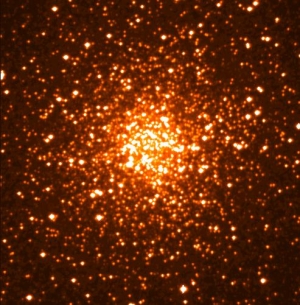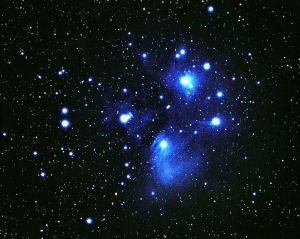 47 Tucunae
47 Tucunae
My research group has temporarily stepped away from the distant universe to focus on the stars that are actually inside our galaxy. We’re looking at these stars because they are so bright and so well understood that we can use them to test the calibration of the telescopes we use to study the most distant supernovae. The other day my co-worker showed the results of the analysis and my jaw dropped. I had forgotten how amazing certain observations of nearby stars can be.
We are looking at stars in a very specific environment known as a globular cluster. For those of you lucky enough to find yourself in Chile or Australia, this particular globular cluster is visible to the naked eye. It is known as 47 Tucanae. The stars in this and all globular clusters formed at roughly the same time and under the same conditions. All the known globular clusters in our galaxy are more than 10 billion years old, almost as old as the galaxy and the Universe.
 Pleiades
Pleiades
Similar to globular clusters are groups of stars known as open clusters. Probably the best known open cluster is the Pleiades. The Pleiades are extremely close--the brightest stars are discernible to the naked eye and inspired the logo of the Subaru motor company. These stars are so bright because they are blue, massive, and most importantly--young. Pleiades was giving birth to its first stars just as our Earthling dinosaurs were bracing themselves for the killer asteroid!
